#napoleanic era
Text
that superfreak lip sync was cute. they both did their thing.

#viv giving napolean dynamite while#raja fulfilling the requirments because she was present during that era…#both shat#drag race#rpdr#as7#all stars 7#rupaul’s drag race#drag race spoilers
24 notes
·
View notes
Text
Youtuber AUs? Is that a thing?
Beckett: Has a channel all about history, mythology, anthropology, and the interactions within. Generally pretty well-researched and presented, aside from his habit of getting into arguments (or flirting) with commenters... and sometimes Smash Or Pass videos for historical figures with a particularly high percentage of ‘smash’.
Sascha: Exclusively posts ASMR ‘POV: I perform amateur surgery on you while chatting amicably about history’-type videos. Sometimes it’s presented as a ‘doing your makeup’ video until they whip out the scalpels and the ice picks and the like. Trolls Beckett’s videos a lot but never replies to comments on their own videos.
Ilias: Has a wide variety of topics! Some particular favourites include Paganism (especially Eastern European Paganism), sex and body positivity, nature, art history (a recent interest), and, occasionally, dance tutorials. Generally Soft(tm) vibes and happily chats away with people in the comments. Wears those cat ear headphones, and his icon is fanart a subscriber made of him as a catboy :3
Anatole: Talks about religion and apocalypse-adjacent stuff, including some material that sounds, uh, vaguely doomsday cult-leaning. Which is. Concerning. Also, history-related stuff, including a lot of collabs with Beckett and Lucita, and mental health-related content, both informative and positivity.
Lucita: Another history-based channel who collaborates with Anatole and Beckett, she also has a side channel about physical and combat training and collaborates with her girlfriend Fatima on those, including exhibition combat matches. Has a small following of people who would like her to snap them in half like a twig. She ignores them.
Fatima: Largely a physical and combat training channel, both solo and with Lucita. She also vlogs regularly about the importance of integrity and being true to your own beliefs, including being queer and Muslim, breaking ties with abusive family members, and the like.
Nines: Lots of leftist political stuff, generally leaning into direct action, and quite a few videos have been taken down after complaints from conservatives. Particular focus on wealth inequality and poverty. Very intense demeanor, although he’s usually pretty friendly (albeit direct!) with people who seem well-intended and who want to learn more. Gets into a lot of arguments with LaCroix, both in the comments and in call-out videos.
LaCroix: One of those extremely polished-looking ‘rich trust fund kid’-vibe channels, with content on business and wealth, the history and philosophy of power and politics, and occasional luxury product reviews. Fascinated by military history, especially the Napoleanic era, and is very... very French (even though he speaks English with a British accent, claiming that since he learned English in the UK, it just stuck). Gets into a lot of arguments with Nines, both in the comments and in call-out videos. Enjoys a good unboxing video.
Roger: Very active video maker who posts about history and culture (with a special interest in both English and Zoroastrian mythology), philosophical videos about death and the afterlife, medicine and medical history, ancient religions and archeology (with an ongoing series on the London Mithraeum and the Mithraic Mysteries), and, for some reason, dealing with troublesome family members. Very calm voice. Despite the fact that he has never once worn a sweater vest, he somehow gives off immense sweater vest vibes.
Mithras: Roleplaying as an ancient Zoroastrian god living in the modern age. Refers to his fanbase as his cultists. Has never once broken character.
#vampire the masquerade#au all the things#feral nerd#mx meat crimes#tzinnamon roll#holy cinnamon roll#black rose of aragon#fatima al faqadi#street prince#sparklingwater#london love story
36 notes
·
View notes
Text

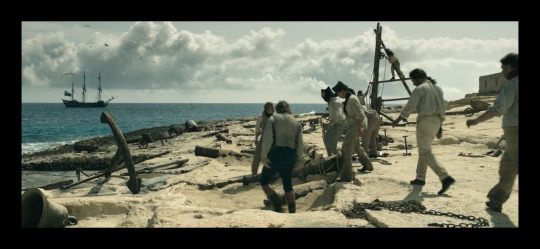


Those who don’t study history are destined to repeat it. Those who watch Napolean’s marriage problems…just watched this movie? Napoleon is a 2 hour and 45 minute historical drama directed by Ridley Scott (Alien, Blade Runner, Gladiator, etc.) starring Joaquin Phoenix who is most recently known for his work in the 2019 comic book hit, Joker. When watching a film like this, you generally expect their to be a lot of battles and essentially a love letter to the emperor in the French Revolution, Napolean Bonaparte. He had led 61 battles in his military career and infamously known for his strategy’s which guided the French to several victories. He was married to Josephine played by Vanessa Kirby in this film. As I expected their to be many historical moments in this film in the field of battle, I would have compromised with a glimpse into this characters life and mind set. I was excited to see how he thinks, and how he leads his army to victory in this film. Basically a testament to the HOW he accomplishes things and the WHY he was so well known…and we got hardly any of that. Instead, we’re given a long soap opera with no true resolve or any sort of information that will be remembered. Their is a new trend in cinema where a movie must be drawn out and long, this one is at least an hour too long. This is the biggest fault of the film, it is too long which makes the film come off as extremely boring. While the dynamic between Napolean and Josephine sounds intriguing on paper, it is not done properly in any regard. Playing off as a cliché, “what are we?” Style dynamic instead. This would have been ok if the momentum in the first 10 minutes was kept up throughout the film. We are faced with a BRUTAL first 10 to 15 minutes of the film which insinuates we are going to have a war story unlike any other based in the 1700’s era. This is not the case. Instead, most of the 2 hours and 45 minutes are a repetition of romance dialogue between Napolean and his wife and it is simply not interesting. However, the battle scenes are shot EXCELLENTLY. Their is one scene in particular in the beginning with a horse being shot blank with a canon ball and it is as gory as it sounds. This makes the audience intrigued that where in for a tale of war and strategic battle victories. The key word is ‘in the beginning’ because this momentum is not kept up throughout the film. However, it is historically accurate. The landmarks are breathtaking when viewed, ranging from Egypt, France (obviously) and a few more I won’t go into due to spoiler reasons. Also, the performances are done excellent. While the story is quite boring and you don’t really care about Napolean or Josephine by the end, it is clearly established both actors/actresses, give it their all in the role, yet the lack of source material doesn’t really make it enough to enjoy the film. In one word to summarize this film, it’s unfortunately very boring. That is the word I kept thinking of. The love story is boring and the dialogue is not entertaining at all. With a run time of 2 hours and 45 minutes, your dreading the viewing experience and trying not to fall asleep, and while the cinematography is fantastic and the landmarks are breathtaking, this movie is simply not good. I’m going to give “Napolean” by Ridley Scott, a 4 out of 10. If you want a historical epic that is a long film and also intriguing, check out “Killers of The Flower Moon” instead. Because this movie will absolutely put you to sleep.
4/10
+Historically accurate
+Battle scenes are beautifully shot
- Hard to stay awake while watching
- Boring story
- No interesting plot points
- Over saturated dialogue sequences that extend way too long
- Difficult to finish due to feeling pointless.
2 notes
·
View notes
Text
0 notes
Text
i rllllyyyyy dont give a fuck about the napolean however u spel that era, it starts being fun around powstanie wielkopolskie /wiosna ludow
1 note
·
View note
Text
Best Toi Et Moi Rings To Symbolize Your Love

Are you planning to propose to the love of your life and are on a quest for the best engagement rings in Chicago? Read the blog till the end to celebrate your love with a splendid range of engagement rings.
What do engagement rings symbolize?
Engagement rings have had a long tradition since ancient times and are now considered a romantic emblem that is appreciated today by the majority of people. Engagement rings stand for the promise of marriage. It symbolizes the beautiful journey of devotion and commitment that two people embark upon when they decide to spend their lives together. Its shape indicates the philosophy of every relationship which is without a beginning or an end.
Toi et Moi engagement rings have a mystical vibe that emanated from the 18th century in France when Napolean Bonaparte presented his bride-to-be Josphine with an engagement ring, featuring two pear-shaped precious stones, blue sapphire and a white diamond set in gold. This ring has a story of its own representing significant emotions of love and togetherness.
Toi Et Moi engagement ring is a bypass ring that wraps around your fiance's finger with two complimentary precious stones. In French, Toi et Moi means ‘you and me’ which adds a romantic expression to your special occasion. If you are someone who wants the jewelry to signify your love then you can go to the best diamond store in Chicago and get it customized.
Here are the best Toi Et Moi engagement rings that you can opt for.
Open Petal Veto Ring
This type of ring denotes harmony, as the fluttering diamonds and pear-shaped diamonds come together. It is a beautiful piece that will suit your fiance's finger and will be a great addition to the collection of her ornament box and can be paired with any outfit. The credit for the creation of this masterpiece goes to Lark & Barry, who filled this ring with precision and style that will inspire others to build the perfect engagement rings.
Vintage Double Rose Cut Diamond Ring
It is a two-stoned double rose cut diamond engagement ring followed by diamonds on the outside, that does not have a super modern feel but can take a cue from the trends of bygone eras, a ring with vintage flair and a uniquely elegant design. This ring is the perfect match for your fiance if she is an old-school person. This amazing piece is created by The Kwait.
Ruby and Diamond Affinity Ring
It is a stunning coalition when a ruby gemstone and diamond come together encircled by a halo of twinkle. If your fiance wants a pop of color for her engagement ring without sacrificing the diamond look, consider this option by opting for custom-made engagement rings in Chicago. This design is inspired by Graziela Gems.
Luna White Topaz Ring
It is an engagement ring that is budget-friendly, simple, and low-key. It gives a contemporary look and is a classy addition to your fiance's jewelry collection. If she is minimalistic with a chic vibe this Toi et Moi is the best match for her. This design is inspired by BondEye Jewelry.
Double Opal Ring
The opal gemstone is considered the queen of gems because of its unique pearlescent luster. This gemstone has a distinctive class of its own as it displays a mesmerizing kaleidoscopic range of rainbow-like hues. The gem is surrounded by diamonds which makes it a whimsical and luxurious piece of jewelry for your fiance. The design is inspired by Sanjay Kasliwal.
Now that you have a range of the best Toi et Moi engagement rings, you can pick the finest among them or customize a ring for her engraving it with the beauty of your relationship. European Jewelers offers the best diamond jewelry in Chicago exhibiting a massive range of engagement rings. Visit them to shop for the best jewelry.
Original Source: https://europeanjewelryamerica.blogspot.com/2022/09/best-toi-et-moi-rings-to-symbolize-your.html
#BuyGoldBullions#jewelryrepairservices#bestdiamondjewelrystoreinChicago#weddingringsandbandsinIllinois
0 notes
Note
On the wikipedia page for the old guard (france): the elite veteran elements of the Emperor Napoleon's Imperial Guard there this sentence: "French soldiers often referred to Napoleon's Old Guard as "the Immortals"". Booker was probably a member of Napoleon's old guard and it's probably what inspired the title of the comics? never seen anything about it..?
i noticed that once when googling tog! there is something oddly funny about the name of the movie coming pretty solidly from the betrayer’s backstory
#id been kind of wondering if greg came up with the name 'the old guard' while researching book's story and kind of liked it#or he came up with the name first#and the circumstance of the name inspired him to add a napolean era french dude#Anonymous
25 notes
·
View notes
Photo

Young and older versions of General Organa from @coffeebuddha‘s fanfic red shoes fanfic reflected in her soul
She may just be there as a fun cameo, but 1800′s General Leia Organa was such a fun idea
full non-tumblr fuzzed image here: x
#leia organa#my art#coffeebuddha#did i spend 2 hours researching period accurate generals uniforms#and british military medals#even tho this all takes place in a fantasy au with werewolves and merlin?#yes#yes i did#fun fact: pride and prejudice actually takes place in the georgian era (1810s) not the regency period#so if Leia is a general and older in the time of the story#then she would have probably mainly fought on the side of the British Empire during the French and American Revolutionary wars#which just seems.... wrong#we can fudge the years a bit and say she fought in the napoleanic wars instead#also i decided to try out using colored lines instead of black#it was a bit trickier#but i think it looks better#what do you think?
17 notes
·
View notes
Photo
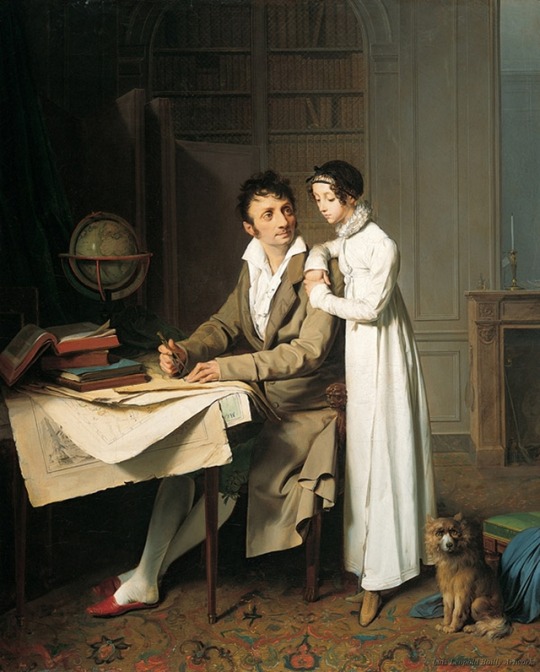
Louis Léopold Boilly, Portrait of Monsieur Gaudry & His Daughter (La leçon de géographie), 1812
51 notes
·
View notes
Photo



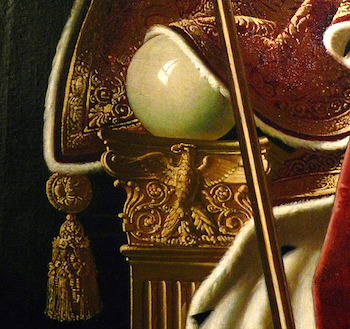



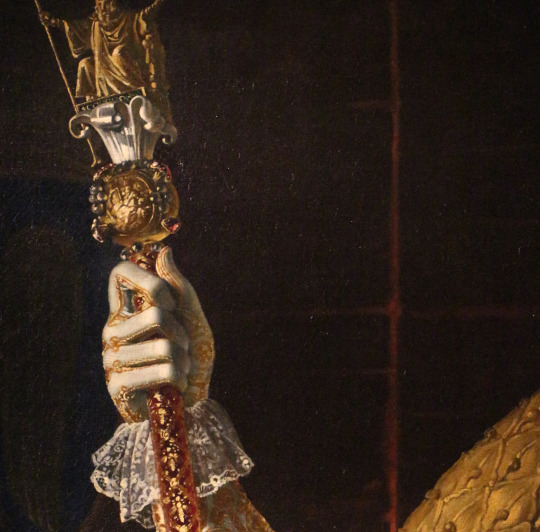

Jean-Auguste Dominique Ingres, Napoleon I on His Imperial Throne, 1806.
#jean-auguste-dominique ingres#napolean bonaparte#napoleon#napoleon bonaparte#neoclassicism#art history#portrait#historic painting#oil canvas#1800's#napoleonic empire#napoleonic era#art#history#french empire#french#details
97 notes
·
View notes
Photo

LisbethNevermore sent me a picture of @leecheedoodles, and I felt the urge to draw our oc in this pose with this conversation, because it's perfectly sounded like them
I love it so much how they interact with each other, since the lady is a rebellious person and the gentleman is mostly a grumpy arrogant a**hole. However they are "lucky" to work together and it brings many opportunities for confrontation
Lisbeth Nevermore (c) LisbethNevermore
Jean-Baptiste de Joyaux-Fleuryssant (c) trotyiegyed
#lisbeth nevermore#jean-baptiste de joyaux-fleuryssant#napolean era#digital#clip studio paint#comic#comic style#art de sorsa#art de trotyiegyed#sorsa#oc#rp#demon#noble#jb
2 notes
·
View notes
Text
Anonymous asked: I love your long posts which make for great reading and I wish you could do more because you’ve got such a range of astonishing interests. I’m hoping because you’ve served in the military you would have studied military thinkers. Do you think the Art of War by Sun Tzu is way overrated by everyone? I studied him a bit for my masters but I still couldn’t get my head around him. Interested to know your thoughts. Thanks!
“To lift an autumn hair is no sign of great strength; to see the sun and moon is no sign of sharp sight; to hear the noise of thunder is no sign of a quick ear." - Sun Tzu's Art of War, Chapter IV - Tactical Disposition, Clause 10.
Sounds cool, doesn’t it?
But what the hell does this quote really mean? Do you know what it means? Can anyone else tell me?
Look, I enjoy a good Sun Tzu quote as the next person. Only recently I was exchanging thoughts with a fellow blogger whose studying Thucydides, Clausewitz, and Kissinger for an advanced course at the US Naval War College. Even he prefers Sun Tzu over Clausewitz. I can see why too. If you can make sense of chapter one of Clausewitz’s tome On War you deserve a Nobel Prize.
Unlike my very learned fellow blogger, there are lot of folk who don’t know Sun Tzu at all. They can quote him, but almost certainly out of context. As someone who partly grew up in the Far East and even learned Chinese and Japanese (a pitiful but functional degree of fluency) I’m embarrassed (not hard since I’m English) when I hear other Western compatriots romanticise and elevate Eastern icons to mythic status that the Chinese themselves have never done.
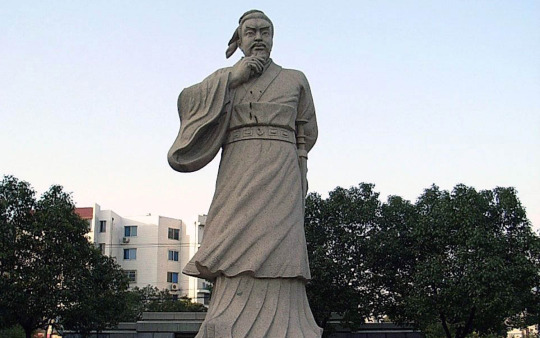
I am even more bemused than embarrassed after having hung up my military uniform for ‘civvy’ corporate clothing at how badly abused Sun Tzu’s book is in the corporate world. In my workplace I grit my teeth at corporate high flyers who mistake a balance sheet for a real battlefield by quoting Sun Tzu out of their arse, and then as self-styled ‘corporate warriors’ work themselves up in a lather of testosterone induced self-importance to crush their corporate enemies into the dust.
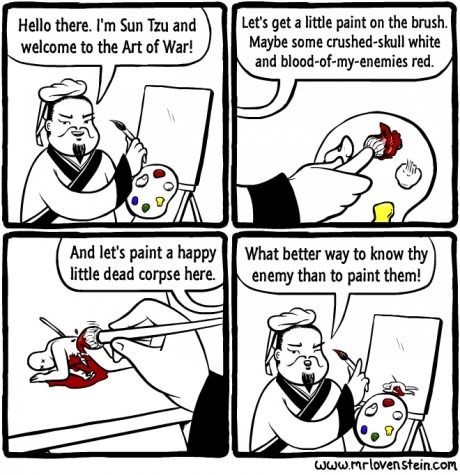
This is why the The Art of War by Sun Tzu has invited a jaundiced eye roll. And rightly so. I can see why many view Sun Tzu as over-rated because many easily impressed people go all woo woo over anything ancient and Eastern.
It’s become a familiar trope to say the art of ‘strategy’ as a science began 2,500 years ago with the writing of The Art of War. I would dispute this. Not that the writing of Art of War was the earliest written but whether I would call it a manual of strategy per se - more on this below in my answer. However you rate or overrate the Art of War it’s important to have perspective and remember this book is written in 512 BC. Other than the bible and some religious books, there are not many books that can survived thousands of years and still remains a steady bestseller and enjoys a wide influence in military academies and army staff colleges today and even as far into board rooms.
The question behind your question is just as interesting to me: why did Sun Tzu and his Art of War gain such traction in the West?

Sun Tzu (544-496 BC) wrote the original text of The Art of War shortly before 510 BC. During most of the past two thousand years, the common people in China were forbidden to read Sun Tzu's text. However, the text was preserved by China's nobility for over 2,500 years. The Chinese nobility preserved the text of The Art of War, known in Chinese as Bing-fa, even despite the famous book-burning by the first Emperor of Chi around 200 BC. The text was treasured and passed down by the Empire’s various rulers. Unfortunately, it was preserved in a variety of forms. A "complete" Chinese language version of the text wasn't available until the 1970s. Before that, there were a number of conflicting, fragmentary versions in different parts of China, passed down through 125 generations of duplication.
Indeed at the beginning of the twentieth century, there were two main textual traditions in circulation, known as the (Complete Specialist Focus) and (Military Bible) versions. There were also perhaps a dozen minor versions and both derived and unrelated works also entitled Bing-fa. Of course, every group considered (and still considers) its version the only accurate one.
When I last visited China before the Covid pandemic for work reason, I had time off to go to a couple of museums that housed the fruits of a number of archeological digs uncovering the tombs of the ancient rulers of China in which sections of Sun Tzu’s works were found. These finds have verified the historical existence of the text and the historical accuracy of various sections. I understand new finds are still being made.

The first complete, consistent Chinese version was created in Taipei in the 1970s. It was titled The Complete Version of Sun Tzu’s Art of War." It was created by the National Defence Research Investigation Office, which was a branch of Taiwan's defence department. This version compared the main textual traditions to each other and to archeological finds and compiled the most complete version possible.
This work was completed in Taiwan rather than mainland China for a number of reasons. Mainland China was still in the throws of the Maoist Cultural Revolution, which actively suppressed the study of traditional works such as Sun Tzu. The mainland had also moved to a reformed character set, while Taiwan still used the traditional character set in which the text was written. Only today is the study of Sun Tzu in mainland China growing, interestingly enough, through the translation of Sun Tzu into contemporary Mandarin. Based on the archeological sources we have today, we are reasonably certain of the historical accuracy of this compiled version that is the basis of what most people use today.
Surprisingly, the Art of War only came to light in the West around the 18th Century.
Historians believe it was first formally introduced in Europe in 1772 by the French Jesuit Joseph-Marie Amiot. It was translated at the time by the title “The thirteen articles of Sun-Tse”. Joseph-Marie Amiot (1718-1793) was not just a Jesuit priest but also an astronomer and French historian, as well as fervent missionary in China. He was one of the last survivors of the Jesuit Mission in China (he died in Beijing).

Many of the historical problems with understanding Sun Tzu's work can be trace back to its first Western translation in French. A Jesuit missionary, Father Amiot, first brought The Art of War to the West, translating it into French in 1782. Unfortunately, this translation started the tradition of mistranslating Sun Tzu's work, starting with the title, The Art of War (Art de la guerre).
This title, copied the title of a popular work by Machiavelli (a criminally underrated writer on military strategy), but it didn't reflect Sun Tzu's Bing-fa, which would be better translated as "competitive methods."
We cannot say what effect being translated by a Jesuit priest had upon the text. It was unavoidable that the work's translation reflected the military prejudices of the time era when war was both popular and Christian. It was also unavoidable that most future translations would reflect some of the first translation's prejudices. However, war was on the verge of becoming much less Christian in the West since this time was the era of the French Revolution (1789).
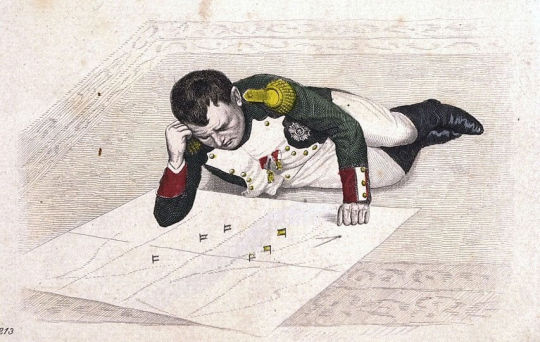
The work might well of slipped into obscurity after its initial publication, but it was discovered by a minor French military officer. After studying it, this officer rose to the head of the revolutionary French army in a surprising series of victories. The legend is that Napoleon used the work as the key to his victories in conquering all of Europe. It is said that he carried the little work with him everywhere but kept its contents secret (which would be very much in keeping with Sun Tzu's theories).
However, Napoleon must have started believing his own reviews instead of sticking with his study of Sun Tzu. His defeat at Waterloo was clearly a case of fighting on a battleground that the enemy, Wellington, knew best. Wellington’s trick at Waterloo was hiding his forces by having them lie down in the slight hollows of this hilly land. This is exactly the type of tactic Sun Tzu warns against in his discussion of terrain tactics.
After Napolean, Sun Tzu's theories made their way into western military philosophy. Many of his ideas are reflected in the ideas of work of Carl von Clausewitz. who defined military strategy as "the employment of battles to gain the end of war."
The first English translation of The Art of War is less than a hundred years old. Captain E. F. Calthrop published the first English translation in 1905. Lionel Giles, an assistant curator at the British Museum and a well-known sinologist and translator, attacked this early translation, and he published his own version in 1910. It soon began to be read alongside Clausewitz’s 8 volumes of turgid German military prose.

It wasn’t long before military thinkers were ditching Clausewitz for Sun Tzu because no one could get past Chapter One of Clausewitz’s On War. The “Clausewitz is dead, long live Sun Tzu” school was first championed by the influential British military theorist B.H. Liddell Hart in the 1920s. Basil Henry Liddell Hart (1895-1970) was a captain in the British Army. He was a very influential military theorist and historian, and author of several books such as The Future of War (1925) and Strategy (1954). Having witnessed first-hand the mechanised onslaught of the Great War, Liddell Hart sought a philosophy of warfare based in the prudent use of technology, psychology and deception - and the avoidance of the 'total war' catastrophes of preceding decades.
The main idea of Liddell Hart is to bring the set of principles of warfare in a so-called ‘indirect approach’ to the enemy. His advocacy in his scholarly work of an ‘indirect strategy’ over direct, frontal operations, was a reaction to the high casualties of the Western Front in the First World War. But his ideas were not simply about physically outmanoeuvring an opponent. Instead he pushed for a psychological scheme: to strike from unexpected directions, to generate strategic dissonance, and to induce paralysis. Hart’s well-known thoughts are “Only short-sighted soldiers underestimate the importance of psychological factors in time of war”, “Originality is the most important from all military virtues”, and “The principles of war could shortly be condensed in a single word: concentration”.

Liddell Hart believed that distilling historical insights of strategy and operations would offer the chance to avoid the costly disasters of modern war and ensure a more cost-effective route to success. He imagined technological solutions in the form of air power and mechanised land forces outflanking and shocking an enemy at the tactical level. This would be complemented by taking indirect strategic ‘ways’. Like his contemporary J.F.C. Fuller, Liddell Hart considered concentrations of air and armoured forces driving deep into enemy territory to destroy their ‘nervous system’. The psychological aspects of this were central, since acquiring an advantage demanded moves that were unexpected, with precise attacks at the most vulnerable points. As the most influential military writer of the modern age, revered and reviled by three generations of strategists, armchair and armipotent, his controversial theories of armed attack laid the foundation of the famed German Blitzkrieg.
Hart’s championing of Sun Tzu’s work as articulated through his own works got a new lease of life as the world gingerly settled into the ice bath of the Cold War. The rise of Communist China, against all the odds having defeated the well disciplined nationalist armies of Chian kai-Shek, was a wake up call for the West. There was a general befuddlement among western military analysts to explain the secret of Maoist success. There was an intellectual inquest in the 1950s and 1960s for some way to explain (and, it was hoped, learn to counter) Maoist military doctrine. Sun Tzu was seen as one of the historical and cultural sources of some particularly Chinese or Asian way of war, and his work made its way into Western discussions of counterinsurgency and asymmetric warfare.

Into the breach - and with fortuitous timing - appeared a new translation of The Art of War that was to become the defining translation right down to our day. Liddel Hart provided the foreword to Samuel Griffth’s 1963 translated copy of the Art of War. It was to quickly become a key text in US war colleges and this version is still to this day favoured by most of these institutions. We also studied Griffith’s translation at Sandhurst alongside Liddell Hart’s ideas.
There is no question that Griffith’s translation has become the standard go to translation to this day in military circles - that is until James Clavell’s more populist and looser translation came along in the 1980s. One can see why. Griffith’s translation provided a number of historical Chinese commentaries on the text. It should also be noted that Griffith’s strengths was his immense experience in the military and knowledge of military history as a brigadier general in the U.S. Marine Corps.
However, this was also his version's greatest flaw. Like many other critics I have the impression that Griffith did not really believe or understand all of Sun Tzu. Indeed he would often explain away Sun Tzu's direct statements without making it clear that this was his commentary and not what Sun Tzu wrote. The other main criticism and this one is stylistic and therefore just my opinion, Griffith was also not much of a writer. By our standards today, much of Griffith’s language can seem awkward and dated.
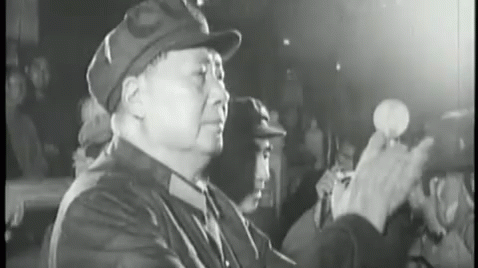
Looking back it feels ironic of the US military were wrapping their heads around Sun Tzu as way to get inside the Chinese communist mind (of Mao the military strategist especially). Unknown to them Mao had desperately tried everything to get hold of a copy of the Art of War from the Chinese Nationalists. Cambridge historian and doyenne of intelligence history, Christopher Andrew in his book The Secret World: A History of Intelligence, wrote that the theory that Sun Tzu’s The Art of War was critical to mastering contemporary warfare is propagated through the use of a tantalising anecdote: “During the civil war between Communists and the Kuomintang regime [Mao Zedong] sent aides into enemy territory to find a copy of it.” The ancient text, ostensibly, was of such vital importance that Mao was willing to risk men’s lives to obtain it, while Chiang Kai-shek vowed to protect it all costs. It’s a questionable anecdote at best as there are no historical evidence of it.
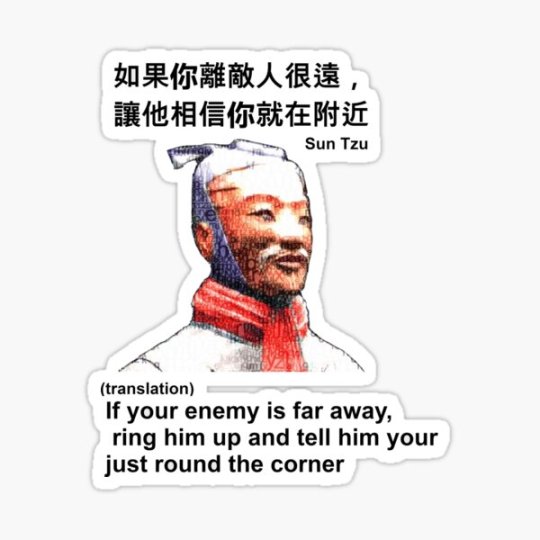
We can say that the notion that Sun Tzu’s slim treatise is considered both potent and slightly dangerous - providing the master key to unlocking victory in war through the ages - is a compelling myth that refuses to die. Mao most likely never ordered a clandestine operation to pilfer the text, nor did Chiang Kai-shek give any thought to shielding its contents from prying eyes. Both men certainly read it long before the start of their civil war, both most likely had ready access to it during the conflict, and neither man won or lost based on adherence or divergence from its teachings. But undoubtedly it set the hearts of Western military theorists aflutter in trying to unlock the secrets of Eastern military thought.
Sun Tzu and his ideas in a reincarnated form took hold of the wider public imagination in the 1980s. The 1980s was synonymous with Japan. With the perceived rise of Japan as a global economic power and the changes in post-Mao China, there was a Western (meaning American) search for more explanations. What was the secret of Asia’s rise? How were Japan and China ‘doing’ this?
In Western business circles it was for a time trendy to read it because of the perception that it was part of what made Japanese businesses so successful during the 70s and 80s. Management gurus and other corporate consultants certainly latched on to it and touted it as a way for Western businesses to re-orient their entire management and business philosophy. I don’t know if that ever actually was the case in Japan - my father who worked in both China and Japan in the corporate world at a very senior level said it wasn’t - but what is true is that in the West as the Japanese economy languished into the lost decade of the 90s so too did interest in Japanese business practices, and thus Sun Tzu.

The idea that The Art of War was a kind of how-to guide to ‘strategy’ was made especially popular by Hollywood in the 1980s. Oliver Stone’s iconic film ‘Wall Street’ seemed to typify the ‘greed is good’ New York capitalist scene of the 80s and 90s. Hollywood mirror imaged the rise of the corporate raiders and junk bond kings like Ivan Boesky and Michael Milken. Hollywood sent thousands of American businessmen off to read Sun Tzu to look for ‘leadership secrets’. This is part of a general Western fascination with ‘timeless Asian wisdom’, the American idea that ‘the mysterious East’ is possessed of secret knowledge. American and European businessmen were enamoured of the idea that “a battle is won or lost before it ever begins”, a saying that reinforced traditional American business attitudes about a winning mentality and a ‘can-do’ spirit being two keys to success.
Because Japan and China were trendy in the 1980s and 1990s it also influenced Western popular culture, not just fashion (think Kenzo) but also comic books (manga) and anime. In this Eastern friendly climate it led a number of popular fiction authors to release their ‘own’ versions of the work to capitalise on its newfound popularity. These versions were more about the pop culture of the era than Sun Tzu. Unfortunately, though popular, none of these versions took advantage of the work completed in Taiwan creating a definitive version of Sun Tzu's text by this time. These versions were based either on old English translations (the Calthorp and Giles versions) or incomplete Chinese sources. However, all of these versions remain popular today, despite their questionable sources and poor quality of translation.

In 1983, James Clavell updated The Art of War translation of Lionel Giles and published it in a very popular version. This started a very common practice in English translation: creating a ‘new’ version from other English translations instead of going back to the original source. Authors today continue to follow this practice, which only perpetuates and exaggerates the problems with early translations.
Thomas Cleary, another well-known author, did his own The Art of War translation with historical commentary in 1988. Again, his name recognition did much to increase awareness of Sun Tzu, even if his work did nothing to improve the general quality of the translation.
Looking back the whole Sun Tzu as a business model fetish in the 1980-90s was really pretty silly, rather like 80s shoulder pads. Of course, there are some similarities in leadership regardless of profession, but the basic goals and working environments of war and of business are so wildly different that applying Sun Tzu to business is superficial at best.
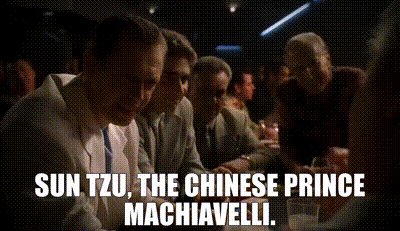
So to me the problem is not that Sun Tzu is ‘overrated’ per se, the problem is that every half baked author out there try to apply its principles to every problems that mankind have. The Art of War, as the title suggest, is not The Art of Managing your Business, the Art of Winning in Competition against your classmates, The Art of picking up Women, The Art of Living Life to the fullest. It is, and only is, The Art of War. It is ‘overrated’ only if you expect it to answer every problems in your life.
The Art of War is not the word of God. It is a war manual advocating common sense with pithy aphorisms - and a very good one.
It’s not that I think the Art of War is over-rated it’s that the more common problem is that many people vastly under-rate Sun Tzu. By misreading Sun Tzu thoughts and ideas, I believe many are in effect under-rating the problems which Sun Tzu is addressing, namely war, or the continuum of conflict resolution where divergence in interests of multiple parties extends to the possible use of lethal force on a massive scale. A lot of people trivialise this problem with idiocies like “what if someone threw a war and nobody came” (clue, they would win, then hunt down and enslave or kill everyone too foolish to contest the issue, as has happened countless times in human history) or “ban war” (said ban apparently enforced by throwing flowers at soldiers).
Understanding that war is a very real and intractable problem is necessary to fully appreciate the genius of Sun Tzu’s work, especially where it avoids fixed and easily definable tactics specific to the Warring States period and instead illustrates timeless concepts of out-thinking the enemy at every level of conflict. That the text is still mostly readily applicable or at least reasonably insightful after thousands of years is a testament to the inability of humans to push warfare beyond the fundamental aspects of conflicting interests and continuum of forcible resolution Sun Tzu addresses.

Still, the particular translation matters far less than having an appreciation that, in war, you have an active opponent who is trying to out-think and counter any moves you make, and having an appreciation of non-dualistic philosophical reasoning more characteristic of Chinese classics generally. The classic symbol of Yin-Yang (and a number of derivative versions) illustrates apparent dualism as being a part of a deeper structural unity which does not permit a fixed division into separate parts.
Hence the difficulty of applying the principles of the Art of War to artificial ideas of “winning/losing” (or war/peace, right/wrong, us/them) as categorical absolutes rather than negotiated possibilities in a continuum of desirability/costs. And it is very difficult, no one should sugar coat that. Humans sort and construct their perceptions of reality by appeal to such gross simplifications. Binary logic is an immensely powerful tool in many areas because it leverages the ability to simplify complexity and then build valid inferences based on fixed premises. But at some point you have to go beyond that to have a more fluid response to reality as it is. Which Sun Tzu does for the reality of war.
I would recommend anyone to read it. At the end of the day it’s a book of highly general aphorisms that effectively synopsise the essential insights that apply to all kinds of human conflicts. Turning an enemy's flank has the exact same effect in 2500 B.C. and in 2000 C.E. and it has the same effect in the boardroom, or public market as it does on the battlefield. Deception and intelligence are still used in exactly the same way, whether conquering foreign lands, or stealing market share from a competitor. It's a book about common sense; but common sense must seem profound to those who have none.
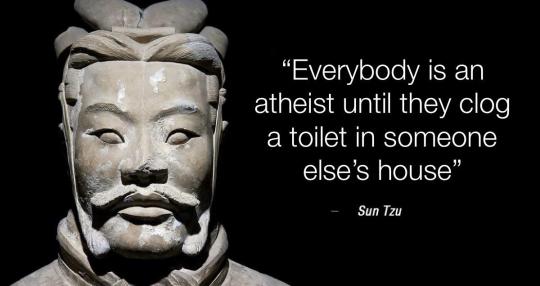
Overall, I think Sun Tzu’s Art of War is a worthy read and not overrated because in our society of over educated achievers, common sense is in as short of supply as it has ever been; if this book can provide the meaningful framework for educating very bright people in down to earth common sense, that can only be a good thing.
The value of the book then is to drive home the fact that, in human conflict, there really is Nothing New Under the Sun (Tzu).
Pardon the pun and thanks for your question.
#question#ask#sun tzu#military history#book#philosophy#china#culture#the art of war#war#military#warfare#strategy#society#literature#america#britain#japan
568 notes
·
View notes
Text
Il Tarocco Napoleonico (The Napolean Tarot) by Osvaldo Menegazzi
One of the decks I picked up on my 2019 visit to the Milan studio of Osvaldo Menegazzi, known as Il Meneghello, was the Tarocco Napoleanico, the Tarot of Napoleon. I pulled it out the other night, and realized I had not written about it yet! Today is Bastille Day in France, so this seemed a propitious time to share it.
It is a standard 78-card progression, with 22 Major and 56 Minor Arcana cards.
As Napoleon spent much of his life in the miitary, and is equally famous for being a general as for being an emperor, the deck has a military theme. In addition to the traditional card names (Le Bateleur, La Papesse, L'Etoile, etc.) the cards are labeled with either the name of an historical person, or a general term, such as "Infanterie" ("Infantry"), "Officier" ("Officer"), etc. The pip cards are military medals, one per suit, and labeled with the military order they represent.
Of course, Napoleon and Josephine are the Emperor and Empress cards—the deck is named for him, after all!

[Image description: The Empress and Emperor cards from the Napoleon Tarot, featuring drawings of Josephine and Napoleon.]
The Major cards are wonderfully creative. The Lovers card shows an officer of the Second Hussars and his lady, which brings to mind the folk song, "The Gallant Hussar".
The Hanged Man card shows an Infantry soldier, which is particularly apt—the enlisted, lowest-level soldier can only do as he is ordered, and has no control over his time, or his life.
The Devil card is a Mameluk warrior; the Mameluks were part of the force which defeated Napoleon's army in Egypt.
Card 16 bears the traditional name of "La Maison Dieu", rather than the Tower. The destruction of the holy temple on the card mirrors the destruction of the human body, which is also a Temple of God, in war, as shown by the corpse at the foot of the tower.
L'Etoile, the Star card, shows two soldiers marching in the dark night. The message reads to me as their hopes for the war ending, so they can return home.
Card 20 is "L'Ange", the "Angel", rather than Judgment. The picture shows Joseph-Michel and Jacques-Étienne Montgolfier aloft in the hot-air balloon they pioneered, which is delightfully clever!
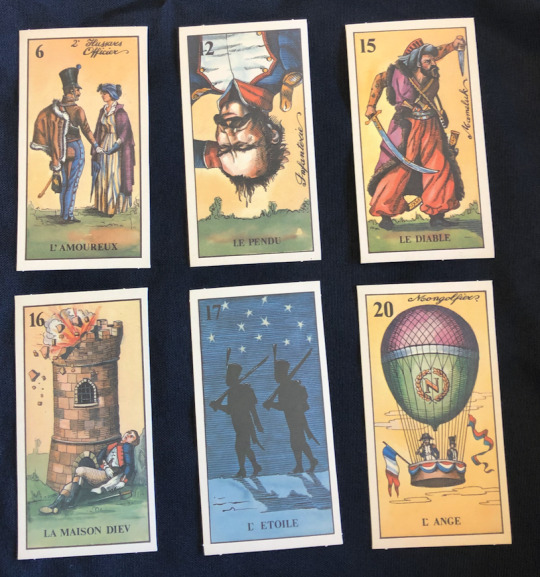
[Image description: The Lovers, Hanged Man, Devil, Tower, Star, and Angel card from the Napoleon Tarot.]
The World card is labeled "Victory", and features Napoleon's hand holding a winged Victory figure on an orb, holding out a laurel crown towards Napoleon. An interesting side note—Appsley House in London, England (the home of the Duke of Wellington, who led the army which defeated Napoleon for the last time) is filled with goods taken from France after the war. One of the items is a large statue of Napoleon holding a similar orb in his hand, but the figure in the statue is flying away from Napoleon. Napoleon did not like the statue, as he felt it was a bad omen—and, well, he was correct.

[Image description: The World card from the Napoleon Tarot.]
The court cards feature various royals of the time—King Charles IV of Spain; Napoleon's stepdaughter/sister-in-law Hortense de Beauharnais, who became Queen Consort of Holland (her sons included Napoleon III); and Emperor Francis I, among others. All have a connection to Napoleon, of course.
If you are familiar with this period of history, this deck is a fascinating representation of the people and events of the time. If you are not familiar with this era, becoming acquainted with this deck will give you a far-ranging knowledge of it.
8 notes
·
View notes
Note
Phrack AU: Persuasion
Oh god, I associate MFMM so strongly with the 1920s that I was trying to make this AU work in a canon-era setting. Bad. Idea.So take this “Uhh, maybe it’s pseudo-Regency, I don’t care” version:
Henry Fisher is is a third son of a Baron, disreputable and pretty much disowned. He lives with his wife and daughters--Phryne, a spirited young woman with a troublesome streak, and the sweet and obedient (he thinks) Janey.
Phryne is stealing peaches with Raymond and Janey when she meets Jack Robinson, whose father’s property they are on. He is not convinced by a pair of pretty eyes, whatever she might claim, but by how skinny she is. It’s the beginning of a youthful romance, quickly forbidden by her father for class reasons. She defies him, of course, but when her uncles both die of an illness and her father inherits the barony after all, she is persuaded to leave it behind. She has no need to wed, now, and a future before her--their parting is bittersweet but understanding.
Jack joins the army, fights Napolean, blah-de-blah, rises ranks quickly.
When Janey disappears a few years later, the Fisher family takes a house in Bath for Margaret’s health (and to flee the memories that haunt the corridors of Richmond Hall); this suits Phryne beautifully, and she flourishes
It is a perfect life, until the now well-respected Captain Robinson arrives in Bath and Phryne finds herself longing to connect to the man who remembers her sister, and is the only one who had ever held her heart.
And a bonus: Phryne is utterly convinced that Jack intends to marry her oldest and dearest friend, and must keep both her sadness and Mac’s sexual preferences secret. The truth of the matter is that Mac and Jack’s sister have been in love for years, and he is a knowing participant in allowing them to have time together.
send me an au and i’ll give you 5+ headcanons about it
52 notes
·
View notes
Text
the boy we knew

The day we found out the tragic news was a beautiful autumn afternoon. I think it was a Saturday and the leaves were turning colors and gathering in mounds of reds, yellows, and greens at the base of the trees in front of the small houses on the block. I had just enlisted in the Army and I wanted to see my friend Ramone before I went off to basic training at Fort Sill in Oklahoma.
Alan, another close friend of Ramone and mine worked at an industrial laundry company called C.Q’s. over on East Grand Blvd and Palmer street. He detested the job, the pay, and the people, but with times being what they were, and jobs being few and far between during the Reagan era recession of the 1980s it was the only job that he could get so he took it, and fought tooth and nails to keep it. I had worked at C.Q’s. as well, and speaking from personal experience I will tell you that there should have been a sign engraved over the entrance that read “All hope abandon, ye who enter here,” like at the gates of hell in Dante’s “Inferno”. I lasted all of six weeks before hell got to be too hot for me to handle. So, I quit and joined the Army.
Alan, on the other hand, stayed and with good reason, his girlfriend Kacy was pregnant now which only exacerbated an already stressful situation. They were beyond broke and argued constantly about everything. I can’t remember how many break up to make up sessions they had, but it was a lot.
Kacy was a feisty streetwise girl with the misfortune of having two train wrecks for parents. The only thing keeping Kacy and her little brother Steven from being homeless and on the streets or worse was Kacy’s wit and her strong will. Kacy was the type of girl that could smell bullshit coming a mile away. She’d smile her sweet slightly crooked smile at the bullshitter, usually some guy way to old to be hitting on a girl her age then she’d kick him in the nuts verbally and sometimes literally and down he’d go. She and Alan were perfect for one another they were the embodiment of Detroit tough. Her biological father was a real winner. I never knew his name or met him, but I heard from Alan that he was doing some serious time up in Jackson penitentiary. Jasmine, her mother was a part-time recovering addict and a full time, well let’s just say the word I would like to call her rhymes with witch.
Kacy and Steven were little more than afterthoughts Jasmine. Jasmine’s major concern was when and where her next fix was coming from, raising a blossoming fifteen-year-old girl and a high strung twelve- year -old boy with criminal tendencies wasn’t high on Jasmine’s to-do list. Kacy and Steven were mostly left to fend for themselves. Kacy, I figured would be alright. She was tough and street smart, but Steven on the other hand was a different story. The first time I saw him strutting up and down the block like a little banty rooster with his nearly translucent white skin and unruly red curls bouncing about his shoulders as he made his way up Farnsworth Avenue, blustering and picking fights with anyone that crossed his path. I knew he was on borrowed time.
Steven was a twig of a boy with visions of grandeur. He was the outlaw son of the outlaw father he never met or knew. A little boy with a major Napolean complex walking around with a boulder on his shoulder daring anyone to knock it off, and many did knock it off and much worse. Undeterred, Steven had decided that being a so-called outlaw was in his blood and that was the way he was going to go.
I watched as Steven began to take up with the absolute worse elements in the neighborhood. Kacy had asked Alan to talk with him, then she asked me, but nothing worked, he was bound and determined to go the way of the wicked, a decision that would cost him his life. When he was 18 or 19 years old I don’t remember which. Steven’s brutally beaten and stabbed body was found in a burnt-out drug den near Woodard Ave.
*****
Kacy’s mother’s boyfriend Bulldog was a small-time weed dealer who liked getting underaged girls high and drunk so that he could take advantage of them sexually. He had tried this move on Stacy a few times when Jasmine wasn’t around or either blackout in one of the upstairs bedrooms, but Kacy always managed to escape unscathed. It was only a matter of time she knew before he would take what he wanted from her the way he did with Tammy, a young Korean girl from up the block. When he did come for her, Kacy and her four-inch steak knife she slept with would be waiting. She told me and Alan that she would kill him before she let him have her. Kacy was right, Bulldog did come for her a few nights later and she had managed to fight him off but cutting him with her knife. When Alan got the news he was furious and although she told him that she had the situation under control I knew that there was no way that Alan would let that kind of thing go.
Bulldog received an anonymous ass-kicking one wintery Michigan morning. Still high or drunk from partying the night before Bulldog staggered out on the icy porch and fell. His feet slipped and slid underneath him then shoot out from under him. The first thing that hit the porch was his fat girlish ass. His ass bounced off the ice, his feet flew into the air, he farted, then his head slammed into the ice-covered wooden porch.
“Motherfucker!” he whined. His voice sounded super high and tinny in the still earlier morning. He lay there for a moment breathing heavily and making a strange sound, a mixture of groans and whimpers.
“ Fat Fucks crying,” Alan whispered barely containing his laughter.
“You think,” I asked amazed and tilted my head toward the porch and sure enough he was crying. Bulldog always played the tough guy and now he was out here crying because he fell and bumped his head. What a fuckin cooze.
“Damn,” I said shaking my head.
After a few minutes, Bulldog pulled himself together and tried to stand up. His feet slid back and forth beneath him and he fell again. His ungloved hand slapped down hard on the icy wooden rail. He yelped like a kicked dog and yanked his hand back and tumbled backward off the porch. He rolled down the four or five front steps and landed flat on his back in the walkway and once again the water work’s started up. Alan and I could believe it. We knew Bulldog was more bark than bite, but we couldn’t believe how soft he really was. This guy was a cream puff. After a few seconds, Bulldog got to his feet and staggered toward his 1970 Chevrolet Monte Carlo, red with a white interior, a very nice car. As he reached for the door handle he looked up and got knocked out. We heard that Jasmine found him lying face down in the snow with a bloody nose, ears, and a broken hand twenty minutes later. A few days later Tammy’s family contacted the police about Tammy’s sexual assault, but by the time they got around to investigating it, Bulldog was gone. West Virginia, that’s where I heard he went, and surprise, surprise, he ended up in jail for statutory rape a few years later.
*****
“What are you going to do,” I asked Alan after he told me about Kacy’s pregnancy. He looked sick.
“ Got to marry her I guess,” he said staring down at the floor.
“ You guess?”
“Yeah, what else can I do. We ain’t having no fucking abortion.”
“ I never suggested…”
“ I know. I’m sorry. I’m so fucked right now.”
“What about money,”
“ I got the job over at C.Qs. Tony’s gonna have to give me a raise.”
“Tony’s not going to give you a raise.”
“Why not?”
“Because he just gave you one a few weeks ago. Why don’t you join the Army with me,” I said? Alan shook his head.
“Forget that, I ain’t going into no Army.”
“ You’ll make more money in the Army then you will working at C.Qs.” Alan thought about it then shook his head again.
“ Nah, we’ll be alright, we’ll manage,” he said.
“You still driving me to the airport?” I asked really wishing my friend would come with me.
“Yeah, If you want me to.”
“Okay,” I said. “I’m heading over to Ramone’s. I’d like to see him before I go.”
“I’ll drive,” Alan said quickly and grabbed his car keys.
*****
Although it had been a few years since we had last seen him, I still considered Ramone a good friend and I wanted to see him before I went off to basic training. Ramone’s street was quiet as it always was when we were kids. Alan parked in front of Ramone’s house and killed the engine.
“I can’t believe he still lives here,” Alan said absently as he looked up and down the short block.
“His parents left him and his sister the house is what I heard,” I said as I looked around.
“Fuck that, I would sell, I wouldn’t want to live around here now.”
Alan and I got out of his Ford Talon and walked up the thin paved walkway up to the house. Everything about the place seemed smaller and shabbier. It was the same small house on E. Palmer that Ramone and his family had lived in when we all went to Ferry Elementary. Going there was like stepping back in time. Many of the same families and small business owners were still there. “Young’s Barbeque” on Mt. Elliot and East Grand Blvd, was still there at the time, “Thompson’s cleaners”, on McDougall and Ferry was still there, and my favorite penny candy store “Frank’s Beer &Wine” on the corner of Ferry and Mt. Elliot, my old block was still there at the time.
That was years ago, they are all gone now, even Ferry Elementary is gone now. Torn down by the city leaving a gigantic black hole where our childhood once stood. An obscene black scar the size of an entire city block with scattered houses and overrun weed fields.
As Alan and I walked toward the small blockhouse my mind drifted back to when I first met Ramone in Mrs. Drum’s class when we were in the fourth grade. I wanted to be Ramone’s friend. It took a while, but slowly but surely he started opening up to me. I remember sitting at our table waiting for the class to start. Alan for whatever reason wasn’t in school that day. Ramone and I sat quietly waiting then he turned to me and look me directly in the eyes. His voice was calm and splashed with a hint of contempt for me.
“ Do you like Alan better than me because he’s white,” he asked. My views on race and culture were still in the development stages so this question caught me completely off guard. As I sit here today writing this, I can almost hear his flat monotonic voice.
“ I don’t like Alan better than you,” I said quickly.
“You don’t,” he asked slightly surprised.
“No, why would I? I like you both the same,” I said.
“For real,” he smiled. It was a rare thing to see Ramone smile.
“Yeah, sure I do. Maybe I’ll ask my mom to see if she’ll let me have company this weekend.”
“Spend a night,” he asked excitedly.
“Yeah, you haven’t spent a night yet,” I said.
A cloud suddenly came over his dark features and his smile slowly faded.
“What’s wrong?” I asked. He looked down at the table and began to fidget with a piece of torn notebook paper.
“You going to invite Alan too,” he looked up and asked cautiously.
“I was going to, why?”
“ Oh,” he said and looked down at his torn piece of paper again, “Then I can’t come.”
“ Why not, should I not invite Alan, I thought you liked Alan?”
“I do. Alan and I are best buds,” he hesitated, “ It’s just that if my mom and dad knew that Alan is going to be there… I don’t think they’ll let me come over.” I looked at him confused for a moment then I remembered Alan telling me about how Ramone’s parents weren’t too keen on him having white friends.
“ My mom would talk to your mom and let her know that you’ll be safe.”
“I know,” he hesitated, “ It’s just that if Alan’s there they won’t let me come.”
“Why not,” I asked even though I already knew the answer. I needed to hear him say it. I don’t know why, but I did. So, he did say it.
“My mom and dad don’t want me playing or hanging around them.” He motioned with his head toward a table of white children.
“Oh,” I said, “why not?”
“They’re white,” he said matter-of-factly.
“Oh,” was all I could think to say.
“My dad says you can’t really trust them and that most of them look down on us black people. They think we’re all on the welfare, or on drugs, or crooks,” he said.
“No, they don’t.”
“My dad says they do.”
“I’ve been to Alan’s house…” I started to say before he interrupted me.
“Your mom and dad let you go over there?” He asked shocked.
“Yeah, and his mom and dad treated me real nice too. They never looked down on me. I even ate dinner over there once.”
“ I bet they think you’re poor now. They gave you charity, see,” he said raising his voice slightly.
“ My dad works at Ford Motor Company, that’s a good job. We’re not poor, my dad’s a boss or something.” I said.
“ I know you’re not, but I bet they think you are.”
“They don’t. They’re nice every time I go over there.”
“ My dad says we shouldn’t do that. He says we should stick to our own kind.”
“ You want to spend the night or not?”
“Alan going to be there?”
“Yeah,” I said. “Just don’t tell your mom and dad.”
He looked at me as if I had just suggested that we rob a bank.
“You mean lie?”
“No, just if they don’t ask you about Alan don’t tell them.” Ramone smiled again and nodded. Ramone was never allowed to spend the night. His parents just wouldn’t let him do it.
On the day of our visit to Ramone’s house, Alan’s family and my family had moved out of the neighborhood and had been out for years by this point. My family moved out right after I graduated from Ferry in 1979. We moved to a quiet middle-class neighborhood about ten miles from where we lived on Mt Elliot Street. The neighborhood was strikingly different than the one we had left. These were tree-lined streets with manicured yards. Our neighbor Mr. Traminski literally had a white picket fence around his yard. It looked like something out of a Norman Rockwell painting. When my family moved in the neighborhood was predominantly white with a few black, Asian, and Arab families sprinkled in for good measure. By the late 80s rolled around almost all the white families had moved out. White flight is what they called it, I guess. Mr. Traminski was one of the first to go. I guess we liked him more than he liked us.
Alan’s family moved out of the old neighborhood around 1983. In this period, Alan and I had become as close as two friends could be, while Ramone whose family never left the old neighborhood began to drift from our orbit. We tried to keep in touch with him but were unable to regularly. All and all, Alan and I had been away from the old neighborhood off and on for almost nine years and at that time, we might have seen Ramone five or six times. The times we did see him he didn’t seem quite right. He seemed tight, and a little off-kilter.
By 1985 Alan and I were high school graduates with our whole lives laid out in front of us. I looked as if I was about to embark on a promising college football career, Ramone had been accepted into several really good universities, and Alan had gotten a job at a paper manufacturing plant.
*****
“This neighborhood has gone to shit,” I said as I scanned my surroundings. I looked out toward the empty lot where Ferry Elementary once stood. The last time Alan and I had been in the neighborhood Ferry Elementary was still standing It had been closed and torn down for years by the next time Alan and I rolled around.
“To shit and then some,” Alan said. I looked up at the cool cloudless sky. A tiny barely visible plane flew by overhead. A reflective dot high above it all creeping across the cobalt sky dipping in and out of sight. I tilted my head back and closed my eyes. I could almost feel the earth rotating, even though I knew that it wasn’t possible, still, it made me feel dizzy. I took a half a step back to avoid staggering, then opened my eyes.
“I bet Ramone’s heading off to Yale or Princeton or some other ivory league school partly because of his grades and partly because he’s black. Affirmative action,” Alan said out of the blue. I slowly turned to him not believing what I was hearing.
“What,” I said my anger was bubbling just below the surface.
“ I bet I couldn’t get in,” he said sharply.
“Yeah, because you don’t have the grades.”
“ I’m just saying,” he shrugged.
The front door swung open and Serina stepped out onto the porch. Serina’s, Ramone’s little sister. She had smooth chocolate skin and wide brown eyes, she looked like a black Barbie doll. She stared at us with a blank expression. She didn’t recognize us. Before that day I remembered Serina as a slightly chubby happy-go-lucky little girl running and playing with her friends on the playground with her protective older brother Ramone always keeping one eye out for her and the other eye out for us. The chubby little girl that used to be too shy to look at me was gone and had been replaced with this beautiful stern woman standing before us in the partially opened screen door.
“Can I help you,” She asked while subtly looking us over.
“Serina,” I said cautiously.
“Yes,” she said without looking at me. Her eyes were fixed on Alan.
“I’m Luke and this is Alan,” I said, “We’re friends of Ramone. Is he here?” She turned to me, her jaw tightened and her eyebrows came together in a tight knot.
“What,” she said, the words came out in a breathy whisper. Her expression softened.
“ Is he home?” I asked. Serina looked at me for a long moment then she turned and looked at Alan. I could see the light bulb coming on. She slowly raised a finger and pointed it at me.
“ Your Luke?” She asked. I nodded and motioned toward Alan.
“ And that’s Alan, do you remember us?” She nodded and stepped out onto the porch closing the screen door behind her.
“Where have you guys been?” she asked in a thin wavey voice. Alan and I looked at one another confused.
“Excuse me,” Alan asked.
“Ramone is dead,” she said in a voice that suggested that she was still struggling with the realization of what had happened. The news was devastating.
“What, when,” Alan and I asked in unison.
“He walked into traffic,” she said in a voice strangled with emotion. “ a truck hit and killed.”
“Where did it happen,” I asked.
“He was on Mt Elliot when it happened.”
“How could this have happened?” I thought. “We were all good friends, weren’t we? How could it be that this was the first we were hearing of this?” I looked at Alan he was standing with his jaw gapped and unhinged looking glossy-eyed and confused. Alan and I stood there on her front porch like mute idiots as Serina dropped the bombshell on us. My brain went foggy and felt warped and wobbled and I jerked my head to the left to shake off the cobwebs. I couldn’t believe it.
“Suicide,” Alan muttered in a low husky voice. I was trying to think of something to say, but my mind was blank.
“I’m sorry,” Serina said. “I thought you guys knew,” she paused, “I thought everyone knew by now.”
“By now,” Alan asked, “How long has he been gone?”
“Three years,” She said matter-of-factly, “ I thought all his true friends knew,” she said bitterly as she glared at us.
“No,” I said shaking my head. She cocked her head to the right and looked at me with her big doll-like brown eyes. She had the kind of eyes that made grown men stutter if she looked directly at you and she was looking directly into the eyes. My mind went blank. Serina was studying me with those eyes, looking for signs of a lie. I understood what she was doing so I held her gaze until she looked away. Ramone had killed himself on my old street. He didn’t kill himself on my block thank god. He did the deed a few blocks up near East Grand Blvd. I don’t think that I had ever known anyone that had committed suicide before or since.
As sad as Ramone’s suicide was I’m sure he was now in a better place. Ramone was a melancholy boy from the moment I met him back in 1976 up until the last time I saw him which must have been some time in the mid-eighties. He just seemed too delicate of a human being to survive in this harsh and hateful world.
1 note
·
View note
Note
Some games I would suggest are the Ikemen series. The fan base is pretty big I think. I would also suggest Mr Love: Queens Choice and Wannabe Challenge. Although the fan base isn’t that big for those games and the game style is different.
Yes, I remember playing the Ikemen Series games ❤ I haven't played Wannabe Challenege, so feel free to send in a description. I've provided a description for the remaining games so you guys can get a good idea about them.
Ikemen Sengoku: The modern-day MC is blasted into Sengoku Era Japan and saves the live of Japan's most ruthless, yet successful leader. It's basically MC navigating throughout Sengoku Era Japan and ultimately falling in love with one of the suitors (you get the chose the suitor). This game touches on a few sensitive subjects and has steamy scenes. If you're into historical fiction or have a thing for drama, I'd recommend that you try this one.
Ikemen Revolution: What happened if another Alice had fallen into Wonderland? This game, MC (from London in the 1800s) falls into the Cradle, a magical land that is fueled with magic and crystals. The only problem is that the Cradle has a 500-year feud between the two territories that exist: the Red Territory and the Black Territory. Play as MC as you fall into the arms of the leaders of the Red and Black Army, trying to survive until you can return home and possibly even end the feud. I'd recommend this game if you're into fantasy and prioritize world-building, they've got some neat stuff here.
Ikemen Vampire: I think the name says it all. MC ends up at manor filled with some of the most influential figures of history (Napolean Bonaparte, Isaac Newton, Vincent Van Gogh) -- except they're all vampires. MC's goal is survive in the mansion without getting themselves into too much trouble, but that's not likely if you're surrounded by a bunch of blood-thirsty vampires. If you're into darker, mature themes-- then this is definitely your game. Be warned though, the game touches a lot on sensitive subjects.
Mr Love Queen's Choice: Probably my favorite out of all the games listed here, it's basically about an MC who possesses the power of premonitions in our modern world. These powers (named EVOL) are a result of genetic engineering, with groups of EVOL users wanting to take over the world. They constantly target MC because there's something special about her, but MC has no clue what makes her so special. There are 4 suitors in this game, but you can't directly romance them (unlike the ikemen games). I think the story is really interesting, but it can be difficult to understand if you're not paying attention.
Also, all these games have significantly harder events. Like it's almost impossible to get SSR cards without paying money (unlike in afterlife where u could grind through the events to get SSR) so be careful for that. Hope you guys find this helpful!
3 notes
·
View notes